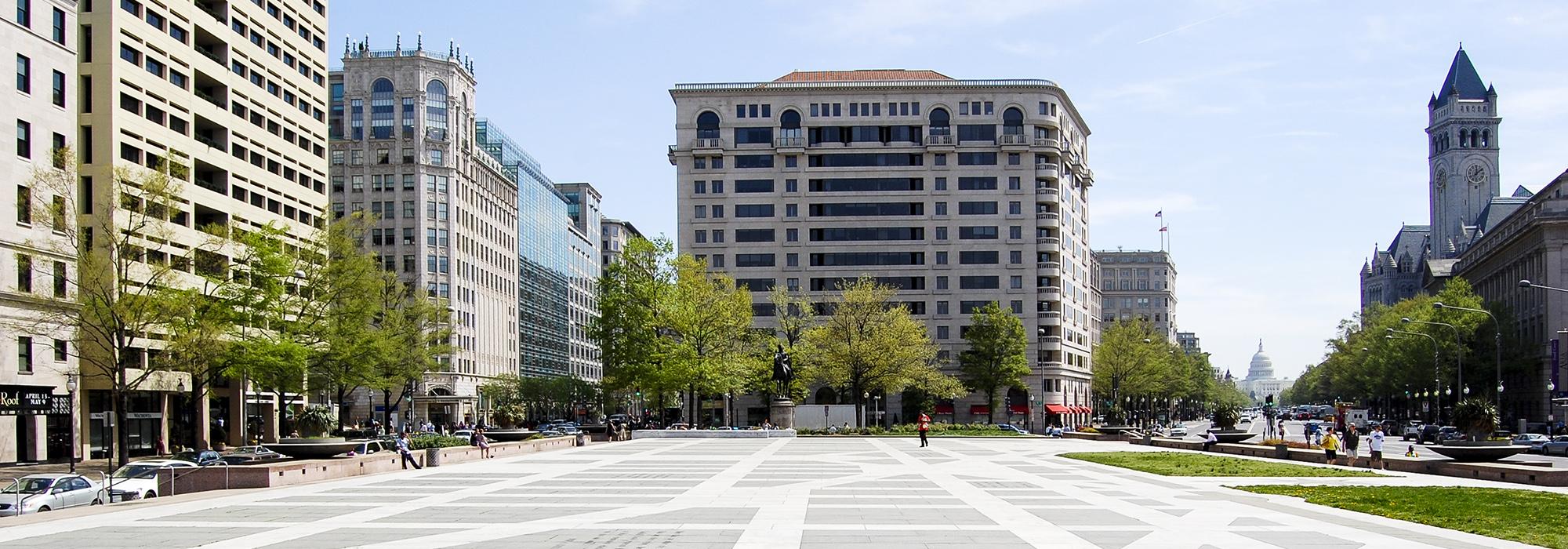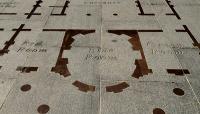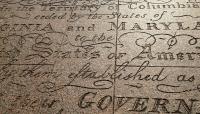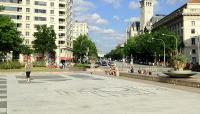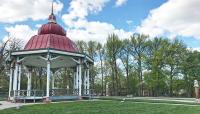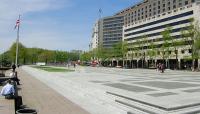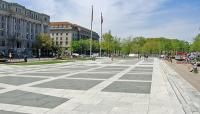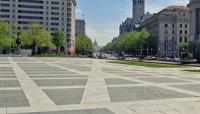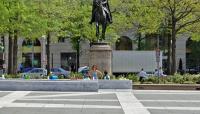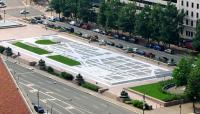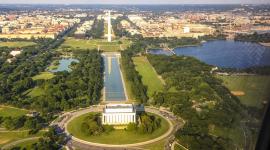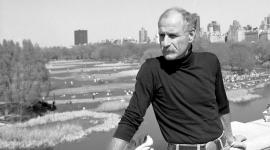Landscape Information
Freedom Plaza and Pershing Park were part of a design competition won by M. Paul Friedberg (Pershing Park) and Venturi, Rausch and Scott Brown with landscape architect George Patton (Freedom Plaza). These new public spaces were part of The Pennsylvania Avenue Development Corporation’s (PADC) plan to transform Pennsylvania Avenue into a ceremonial route connecting the U.S. Capitol to the White House.
Named in honor of Martin Luther King, Jr., and opened in 1980, this Modernist plaza is set on a raised terrace platform and separated from the surrounding streets by a series of steps. Composed of simple elements, the pavement consists of a large 1887 map of Pierre Charles L’Enfant’s Federal City delineated in black granite and white marble, grass panels representing the Mall and the Ellipse, and bronze markers denoting the Capitol and the White House. Historic quotations are incised on the plaza floor and terrace walls. The western end of the plaza contains a large fountain, while the eastern end features an equestrian statue of Kazimierz Pułaski.The original design scheme, partially realized because of concerns expressed by chairman of the Fine Arts Commission, J. Carter Brown, proposed large maquettes of the White House and Capitol buildings, two tall sculptural pylons which would frame the Treasury Building linking the plaza to the city and a multipart sculpture by Richard Serra.
This project, along with Welcome Park and Franklin Court, in Philadelphia, are unique interpretive designs by Venturi and Scott Brown for reclaiming urban spaces and transforming them into urban plazas.



